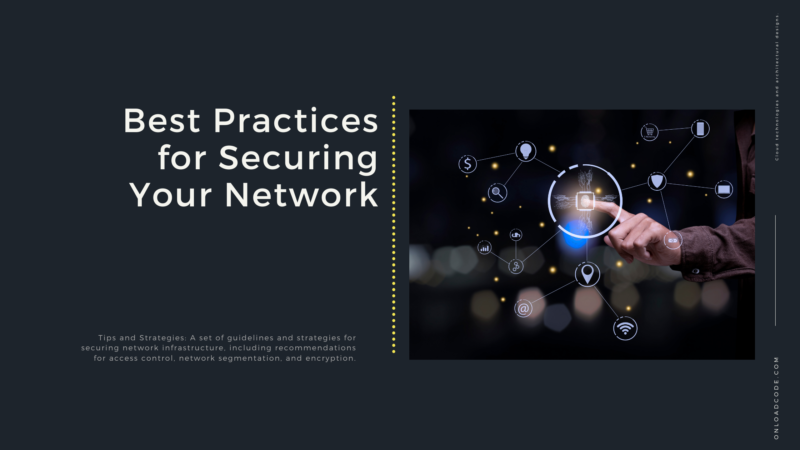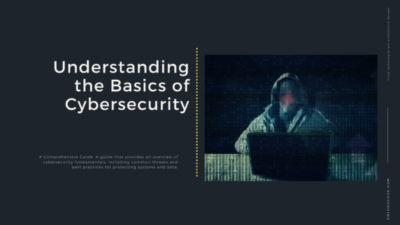This article explores a comprehensive set of guidelines and strategies for securing your network infrastructure. Discover best practices for network access control, network segmentation, encryption, monitoring, incident response, and more to protect your network from cyber threats.
This is the 5th article in the Cybersecurity: Securing the Digital Landscape series. In this article, we are discussing Best Practices for Securing Your Network.
Introduction to Network Security
The Importance of Securing Your Network Infrastructure
In today’s interconnected world, network security plays a critical role in safeguarding sensitive data and ensuring the uninterrupted operation of business networks. Securing your network infrastructure is essential for protecting against a wide range of threats, including unauthorized access, data breaches, malware infections, and service disruptions.
By implementing robust network security measures, you can:
- Protect Confidentiality: Network security helps maintain the confidentiality of your data by preventing unauthorized users from accessing sensitive information. This is especially crucial when dealing with financial records, customer data, or proprietary business information.
- Safeguard Integrity: Network security measures ensure the integrity of your data by preventing unauthorized modifications, tampering, or corruption. By implementing mechanisms such as data encryption and secure transmission protocols, you can ensure that data remains unaltered and trustworthy.
- Ensure Availability: Network security measures help maintain the availability of your network resources and services. By mitigating the risk of distributed denial-of-service (DDoS) attacks, network failures, or other disruptions, you can ensure uninterrupted access to critical systems and applications.
Understanding the Risks and Consequences of Network Breaches
Network breaches can have severe consequences for businesses and individuals alike. Some of the risks and consequences include:
- Data Loss or Theft: A network breach can result in the loss or theft of sensitive data, including customer information, financial records, and intellectual property. This can lead to reputational damage, financial losses, legal implications, and loss of customer trust.
- Financial Implications: The financial impact of a network breach can be substantial. It can result in direct costs associated with incident response, remediation, and potential legal actions. Indirect costs include business disruption, loss of productivity, and potential loss of customers or business opportunities.
- Regulatory Compliance Issues: Many industries have specific regulations and compliance requirements regarding the protection of sensitive data. A network breach can lead to non-compliance, resulting in fines, penalties, or other legal consequences.
- Damage to Reputation: A high-profile network breach can significantly damage an organization’s reputation. It can erode customer trust, negatively impact brand perception, and lead to a loss of business opportunities. Rebuilding a tarnished reputation can be a challenging and time-consuming process.
To illustrate the risks and consequences of network breaches, consider the following real-life examples:
Example 1:
In 2017, Equifax, one of the largest credit reporting agencies, experienced a massive data breach that exposed the personal information of approximately 147 million consumers. The breach resulted in significant financial losses for Equifax, lawsuits, regulatory scrutiny, and a damaged reputation.
Example 2:
A ransomware attack targeted the city of Atlanta in 2018, causing widespread disruption to various municipal services, including the court system and bill payment portals. The attack cost the city millions of dollars in recovery efforts, lost revenue, and affected thousands of residents who were unable to access essential services.
By understanding the risks and consequences associated with network breaches, organizations can take proactive steps to enhance their network security and protect their valuable assets.
Network Access Control
Implementing Strong Authentication Mechanisms
One of the fundamental aspects of network security is ensuring that only authorized individuals can access the network resources. Implementing strong authentication mechanisms is crucial in preventing unauthorized access and protecting sensitive data. Some common authentication methods include:
- Password-based Authentication: Passwords are the most widely used authentication method. However, to ensure their effectiveness, it is essential to enforce strong password policies. This includes requiring passwords to be a combination of alphanumeric characters, special symbols, and regular password updates.
- Two-Factor Authentication (2FA): Two-factor authentication adds an extra layer of security by requiring users to provide two forms of identification, such as a password and a unique verification code sent to their mobile device. This method significantly reduces the risk of unauthorized access even if a password is compromised.
- Biometric Authentication: Biometric authentication uses unique physical or behavioral characteristics, such as fingerprints, iris scans, or facial recognition, to verify the user’s identity. Biometrics provide a high level of security and are difficult to replicate, making them an effective authentication method.
Role-Based Access Control (RBAC)
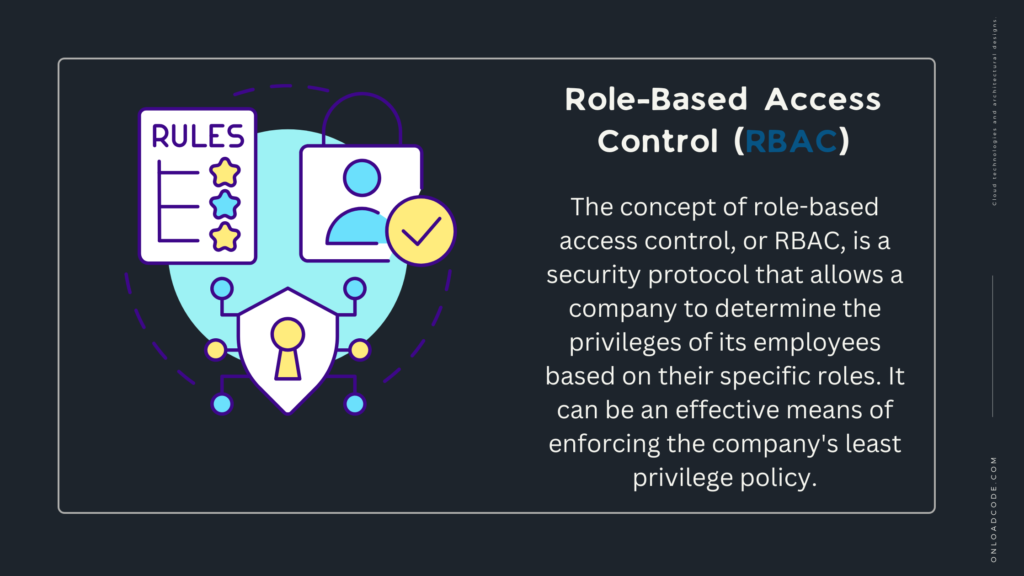
RBAC is a widely adopted approach to managing network access permissions. With RBAC, access privileges are assigned based on the user’s role within the organization. This ensures that users only have access to the resources and information necessary to perform their job functions. Key features of RBAC include:
- User Roles: User roles are defined based on job responsibilities and functions within the organization. Each role is associated with a set of permissions and access rights.
- Access Permissions: Access permissions are assigned to user roles rather than individual users. This simplifies access management and ensures consistency across the organization.
- Access Control Lists (ACLs): ACLs are used to define the specific resources, such as files, folders, or network devices, that each role can access. ACLs provide granular control over access permissions.
Network Access Policies and Permissions
Establishing comprehensive network access policies and permissions is vital for controlling who can access specific resources and what actions they can perform. This helps prevent unauthorized access, reduce the risk of data breaches, and maintain the integrity of the network. Some best practices for network access policies and permissions include:
- Least Privilege Principle: Follow the principle of least privilege, granting users the minimum level of access required to perform their tasks. This minimizes the potential damage caused by compromised accounts or human errors.
- Regular Access Reviews: Conduct regular reviews of user access rights to ensure that permissions are up to date and aligned with current job roles and responsibilities. Remove access rights promptly for employees who no longer require them.
- Segmentation and Network Zones: Implement network segmentation to divide the network into different zones, each with its access controls and security measures. This helps contain the impact of a security breach and prevents lateral movement within the network.
By implementing strong authentication mechanisms, adopting RBAC, and defining network access policies and permissions, organizations can significantly enhance their network security posture. These measures help minimize the risk of unauthorized access, protect sensitive data, and maintain the integrity of the network infrastructure.
Network Segmentation
The Benefits of Network Segmentation
Network segmentation is the process of dividing a network into smaller, isolated segments or zones. Each segment operates independently and has its own set of security controls and access rules. Network segmentation offers several benefits for network security:
- Enhanced Security: By segregating the network into smaller segments, the impact of a security breach or unauthorized access is limited to that specific segment. This prevents lateral movement and contains the potential damage.
- Granular Access Control: Network segmentation allows for granular access control by defining access rules and permissions specific to each segment. This ensures that only authorized users and devices can access the resources within that segment.
- Improved Performance: Segmented networks can improve network performance by reducing network congestion and improving network efficiency. By isolating different types of traffic, such as voice, video, and data, network performance can be optimized for each segment.
Implementing Segmentation Strategies
When implementing network segmentation, it is essential to consider the following strategies:
- Virtual LANs (VLANs): VLANs are a popular method of network segmentation that uses logical rather than physical separation. By configuring VLANs, different groups of devices can be logically grouped together, even if they are physically connected to the same network switch.
- Subnetting: Subnetting involves dividing a network into multiple subnetworks or subnets. Each subnet has its own IP address range and can be treated as a separate network. Subnetting provides more control over network traffic and allows for more precise security policies.
- Firewalls and Access Control Lists (ACLs): Firewalls and ACLs play a crucial role in enforcing access control between network segments. By configuring firewall rules and ACLs, organizations can specify which traffic is allowed or denied between different segments, ensuring that only authorized communication occurs.
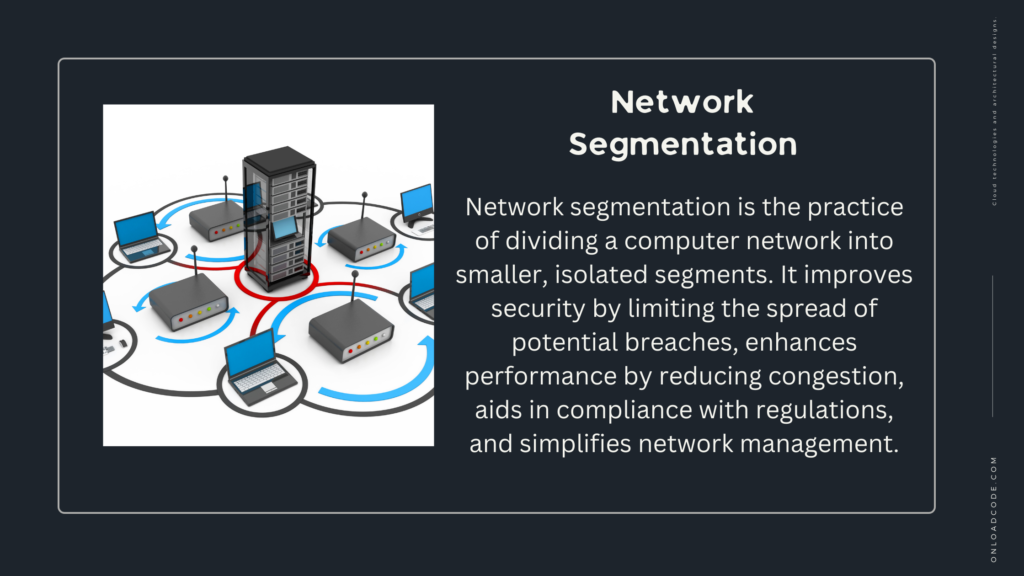
By implementing network segmentation strategies such as VLANs, subnetting, and appropriate access controls, organizations can enhance their network security and reduce the risk of unauthorized access or lateral movement within the network. Network segmentation provides an effective defense mechanism against potential threats and helps maintain the confidentiality, integrity, and availability of critical resources.
Firewalls and Intrusion Detection/Prevention Systems
The Role of Firewalls in Network Security
Firewalls are essential components of network security that act as a barrier between internal networks and external threats. They monitor and control incoming and outgoing network traffic based on predetermined security rules. The primary role of firewalls is to enforce access control policies, preventing unauthorized access and protecting the network from malicious activities.
Types of Firewalls: Hardware and Software
There are two main types of firewalls: hardware firewalls and software firewalls.
- Hardware Firewalls: Hardware firewalls are physical devices that are deployed at the network perimeter, typically between the internal network and the internet. They provide a dedicated layer of protection by inspecting network traffic and applying security policies. Hardware firewalls offer robust security features, including stateful packet inspection, intrusion prevention, and virtual private network (VPN) support.
- Software Firewalls: Software firewalls, also known as host-based firewalls, are installed on individual computers or servers. They provide protection at the endpoint level and monitor network traffic specific to that device. Software firewalls are particularly useful for mobile devices and remote workers, as they can enforce security policies regardless of the network they are connected to.
Intrusion Detection Systems (IDS) and Intrusion Prevention Systems (IPS)
Intrusion Detection Systems (IDS) and Intrusion Prevention Systems (IPS) are crucial components of network security that complement firewalls.
- Intrusion Detection Systems (IDS): IDS monitors network traffic for suspicious activity or potential security breaches. It analyzes packets and compares them against known attack patterns or abnormal behavior to identify potential threats. IDS can generate alerts or notifications to system administrators, allowing them to investigate and respond to potential security incidents.
- Intrusion Prevention Systems (IPS): IPS goes beyond IDS by not only detecting but also actively preventing malicious activities. IPS can automatically block or take corrective actions in real-time to mitigate security threats. It combines the functionality of IDS with the ability to intervene and block malicious traffic actively.
By deploying firewalls and utilizing intrusion detection/prevention systems, organizations can establish multiple layers of defense to protect their networks from unauthorized access, malware attacks, and other security risks. These technologies work in tandem to monitor, filter, and safeguard network traffic, providing proactive security measures.
Encryption and Data Privacy
Understanding Encryption and its Role in Network Security
Encryption is a fundamental technique used to protect sensitive information and maintain data privacy in network communications. It involves converting plaintext data into ciphertext using encryption algorithms, making it unreadable to unauthorized parties. Encryption plays a crucial role in network security by ensuring confidentiality, integrity, and authentication of data.
Encryption works through the use of cryptographic keys, which are required to encrypt and decrypt the data. There are two main types of encryption: symmetric encryption and asymmetric encryption.
- Symmetric Encryption: Symmetric encryption uses a single shared key for both encryption and decryption processes. The same key is used by the sender to encrypt the data and the recipient to decrypt it. Examples of symmetric encryption algorithms include Advanced Encryption Standard (AES) and Data Encryption Standard (DES).
- Asymmetric Encryption: Asymmetric encryption, also known as public-key encryption, uses a pair of keys: a public key and a private key. The public key is used for encryption, while the private key is used for decryption. The public key can be freely distributed, while the private key must be kept confidential. Examples of asymmetric encryption algorithms include RSA (Rivest-Shamir-Adleman) and Elliptic Curve Cryptography (ECC).
Secure Socket Layer/Transport Layer Security (SSL/TLS)
Secure Socket Layer (SSL) and its successor Transport Layer Security (TLS) are cryptographic protocols that provide secure communication over networks. They establish an encrypted connection between a client and a server, ensuring the confidentiality and integrity of data transmitted over the network. SSL/TLS is commonly used in web browsers for secure HTTPS communication.
Virtual Private Networks (VPNs) and Encryption Protocols
Virtual Private Networks (VPNs) create secure and private connections over public networks, such as the Internet. They encrypt the network traffic between the user’s device and the VPN server, protecting data from eavesdropping and unauthorized access. VPNs use encryption protocols, such as IPsec (Internet Protocol Security), SSL/TLS, or OpenVPN, to secure the communication channels.
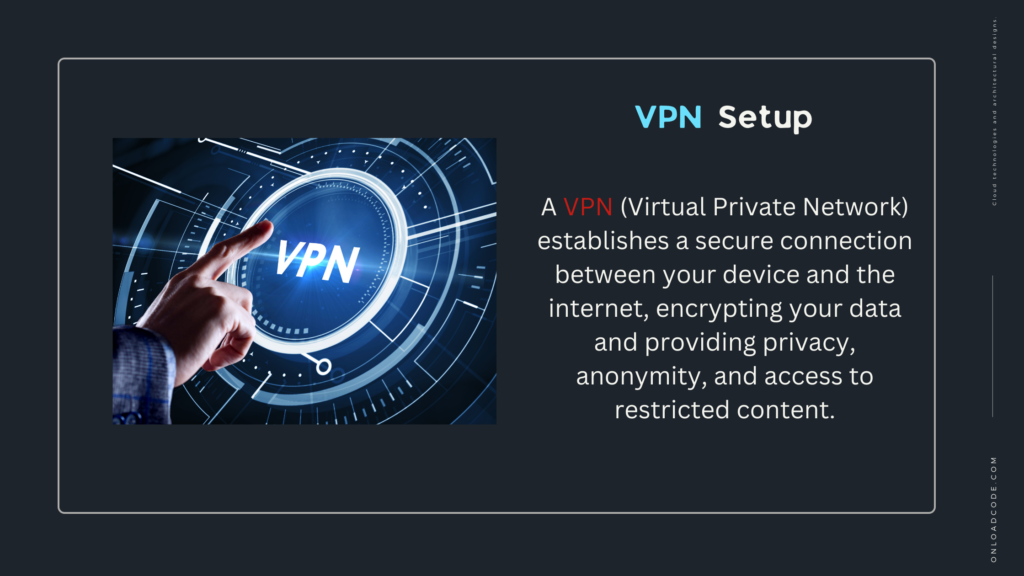
By implementing encryption techniques, organizations can safeguard their data and ensure secure communication across networks. Encryption, along with the use of SSL/TLS and VPNs, adds an extra layer of protection, making it significantly more challenging for attackers to intercept or manipulate sensitive information.
Monitoring and Incident Response
Network Monitoring Tools and Techniques
Network monitoring is a critical aspect of maintaining network security. It involves the continuous monitoring and analysis of network traffic, devices, and systems to identify any suspicious or malicious activities. By monitoring network traffic, organizations can detect anomalies, potential threats, and unauthorized access attempts. Several tools and techniques aid in network monitoring, including:
- Intrusion Detection Systems (IDS): IDS monitors network traffic for signs of potential attacks or security breaches. It analyzes network packets and compares them against known attack patterns or signatures to identify suspicious activity.
- Intrusion Prevention Systems (IPS): IPS goes beyond detection and actively blocks or prevents identified malicious traffic from entering or leaving the network. It acts as a proactive defense mechanism by taking immediate action to stop potential threats.
- Log Analysis: Monitoring and analyzing logs generated by network devices, servers, and applications can provide valuable insights into network activities and potential security incidents. Log analysis tools help identify patterns, anomalies, and security events that require further investigation.
Security Information and Event Management (SIEM)
SIEM is a comprehensive approach to network security management that combines security information management (SIM) and security event management (SEM). It involves collecting, analyzing, and correlating log data from various sources across the network infrastructure to identify security events and potential threats. SIEM solutions provide real-time monitoring, alerting, and reporting capabilities, enabling organizations to effectively respond to security incidents.
Incident Response Planning and Execution
An incident response plan is a predefined set of procedures and actions to be followed in the event of a security incident. It outlines the roles and responsibilities of individuals involved in the response process and provides a step-by-step guide on how to contain, mitigate, and recover from a security breach. The incident response plan should include:
- Incident Identification and Classification: Establishing criteria to identify and classify security incidents based on their severity and impact.
- Incident Response Team: Forming a dedicated team responsible for managing and executing the incident response plan.
- Communication and Reporting: Defining communication channels and protocols for reporting and disseminating information during an incident.
- Containment and Mitigation: Outlining the steps to contain the incident, minimize the impact, and prevent further damage.
- Forensic Analysis: Conducting a thorough investigation to determine the root cause, assess the extent of the breach, and gather evidence for legal or disciplinary actions.
By leveraging network monitoring tools, implementing SIEM solutions, and having a well-defined incident response plan, organizations can effectively detect, respond to, and mitigate security incidents. These proactive measures help minimize the impact of attacks and ensure the resilience of the network infrastructure.
Employee Awareness and Training
In addition to technical measures, employee awareness and training play a crucial role in ensuring network security. Employees are often the first line of defense against cyber threats, and their actions can significantly impact the overall security posture of an organization. This section focuses on key aspects of employee awareness and training.
Importance of Security Awareness Training
Security awareness training educates employees about the importance of cybersecurity, the risks associated with negligent behavior, and the best practices for maintaining a secure work environment. By providing employees with the necessary knowledge and skills, organizations can empower them to make informed decisions and act responsibly when it comes to network security.
Phishing and Social Engineering Awareness
Phishing and social engineering attacks remain prevalent and continue to evolve in sophistication. It is crucial to educate employees about these types of attacks and how to recognize and respond to them effectively. Security awareness training should cover topics such as:
- Identifying phishing emails: Teaching employees to recognize common signs of phishing emails, such as suspicious links, misspellings, or requests for sensitive information.
- Social engineering techniques: Raising awareness about the tactics used by attackers to manipulate individuals and gain unauthorized access to systems or data. This may include impersonation, pretexting, or baiting.
- Safe browsing habits: Encouraging employees to exercise caution while browsing the internet, avoiding clicking on suspicious links or downloading files from untrusted sources.
Reporting Suspicious Activity
Employees should be encouraged to report any suspicious activity or potential security incidents promptly. Establishing clear reporting channels and providing guidelines on what constitutes suspicious behavior will help create a culture of vigilance within the organization. Reporting mechanisms can include dedicated email addresses, incident response hotlines, or online reporting forms.
By raising employee awareness and providing comprehensive training on security best practices, organizations can significantly reduce the risk of successful attacks. Regularly updating training materials and conducting simulated phishing exercises can help reinforce knowledge and keep employees vigilant.
Regular Audits and Updates
Regular audits and updates are essential components of network security maintenance. This section focuses on the importance of conducting audits, performing vulnerability assessments, managing patches and firmware updates, and keeping security policies up to date.
Network Auditing and Vulnerability Assessments
Network auditing involves conducting comprehensive assessments of the network infrastructure to identify potential vulnerabilities, weaknesses, and misconfigurations. These audits can be performed internally or by third-party security professionals. By conducting regular audits, organizations can proactively identify security gaps and take appropriate measures to address them. Vulnerability assessments involve using automated tools or manual techniques to scan the network for known vulnerabilities, outdated software versions, or weak configurations.
Patch Management and Firmware Updates
Patching is the process of applying updates or fixes to software applications and operating systems to address known security vulnerabilities. Similarly, firmware updates are crucial for network devices, such as routers, switches, and firewalls, to ensure they have the latest security patches and feature enhancements. Organizations should establish robust patch management processes, including:
- Regular patch assessments: Monitoring vendor advisories and security bulletins to identify and prioritize critical patches for immediate installation.
- Testing and deployment: Implementing a controlled testing environment to evaluate the impact of patches on network performance and compatibility before deploying them across the entire network.
- Automation and centralization: Utilizing patch management tools that automate the deployment of patches and allow centralized control and monitoring of the patching process.
Keeping Security Policies Up to Date
Security policies serve as the foundation for network security by outlining guidelines, rules, and procedures to protect critical assets and ensure compliance. It is important to review and update security policies regularly to reflect changing threats, technologies, and regulatory requirements. Key areas to consider when updating security policies include:
- Access control: Defining user access levels, authentication mechanisms, and authorization processes to restrict unauthorized access to network resources.
- Data protection: Establishing policies for data encryption, data classification, and data handling practices to safeguard sensitive information.
- Incident response: Outlining procedures for detecting, reporting, and responding to security incidents, including incident escalation, communication protocols, and forensic investigation.
Regular audits and updates demonstrate a commitment to maintaining a secure network environment. By conducting vulnerability assessments, implementing timely patches and firmware updates, and keeping security policies up to date, organizations can mitigate potential risks and enhance their overall network security posture.
Cloud Security Considerations
As organizations increasingly embrace cloud computing, it is crucial to understand the unique security considerations and challenges that come with it. This section delves into securing network infrastructure in the cloud and provides best practices and compliance guidelines for ensuring robust cloud security.
Securing Network Infrastructure in the Cloud
When it comes to cloud security, organizations need to consider various aspects of their network infrastructure. These include:
- Identity and Access Management (IAM): Implementing strong authentication and access control mechanisms to regulate user access to cloud resources. This includes employing multi-factor authentication (MFA), role-based access control (RBAC), and user activity monitoring.
- Data Encryption: Encrypting data at rest and in transit to protect sensitive information stored in the cloud. Utilizing encryption protocols such as Transport Layer Security (TLS) or Secure Sockets Layer (SSL) helps ensure the confidentiality and integrity of data.
- Network Segmentation: Implementing network segmentation in the cloud environment to isolate different components or applications from each other. This prevents lateral movement in case of a security breach and limits the potential impact of a compromise.
- Intrusion Detection and Prevention: Deploying intrusion detection and prevention systems (IDPS) in the cloud to detect and block malicious activities. These systems can monitor network traffic, analyze patterns, and alert administrators in real-time.
Cloud Security Best Practices and Compliance
To enhance cloud security, organizations should follow best practices and comply with industry standards and regulations. Some key considerations include:
- Cloud Provider Evaluation: Thoroughly assessing the security capabilities and track record of cloud service providers before selecting a provider. This includes evaluating their data protection measures, incident response processes, and compliance certifications.
- Data Governance and Compliance: Ensuring compliance with relevant data protection regulations, such as the General Data Protection Regulation (GDPR) or the Health Insurance Portability and Accountability Act (HIPAA). Organizations must understand where their data resides, who has access to it, and how it is protected.
- Continuous Monitoring and Threat Intelligence: Implementing robust monitoring tools and leveraging threat intelligence sources to detect and respond to cloud-specific threats. This includes monitoring network traffic, system logs, and applying anomaly detection techniques.
- Incident Response Planning: Developing a comprehensive incident response plan specific to the cloud environment. This plan should outline the steps to be taken in the event of a security incident, including containment, eradication, and recovery processes.
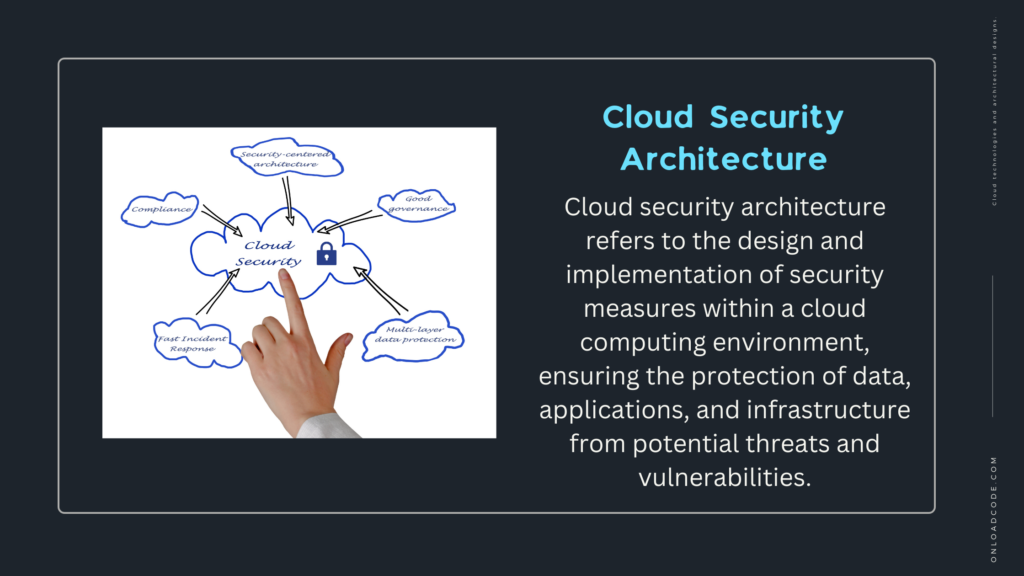
By adhering to these best practices and complying with relevant regulations, organizations can establish a strong security foundation for their cloud-based network infrastructure. This enables them to confidently leverage the benefits of the cloud while mitigating the associated risks.
Conclusion
In conclusion, securing your network is a continuous effort that requires implementing best practices, staying informed about emerging threats, and adapting your security measures accordingly. This article has provided an overview of key strategies and considerations for securing your network infrastructure. Let’s recap some of the best practices discussed:
- Network Access Control: Implement strong authentication mechanisms, role-based access control, and network access policies to regulate user access.
- Network Segmentation: Divide your network into isolated segments to limit the impact of a security breach and prevent lateral movement.
- Firewalls and Intrusion Detection/Prevention Systems: Deploy firewalls and IDS/IPS solutions to monitor and block malicious activities.
- Encryption and Data Privacy: Utilize encryption protocols and virtual private networks (VPNs) to protect data in transit and at rest.
- Monitoring and Incident Response: Employ network monitoring tools, SIEM solutions, and develop a comprehensive incident response plan.
- Employee Awareness and Training: Educate employees about security best practices, particularly in areas such as phishing and social engineering.
- Regular Audits and Updates: Conduct network audits, vulnerability assessments, and ensure timely patch management and firmware updates.
- Cloud Security Considerations: Apply cloud-specific security measures, such as robust identity and access management, data encryption, and compliance with relevant regulations.
It is important to recognize that network security is not a one-time effort but an ongoing process. As technology evolves and new threats emerge, it is crucial to stay vigilant and adapt your security measures accordingly. Regularly assess your network infrastructure, stay updated with the latest security trends, and invest in employee training to ensure a strong defense against cyber threats.
By following these best practices and maintaining a proactive approach to network security, you can significantly reduce the risk of a successful cyber attack and protect your organization’s sensitive data and critical assets.
Remember, securing your network is a collective effort that requires collaboration between IT teams, employees, and stakeholders across the organization. Stay informed, stay proactive, and stay ahead of evolving threats to maintain a resilient and secure network environment.
My articles on medium




